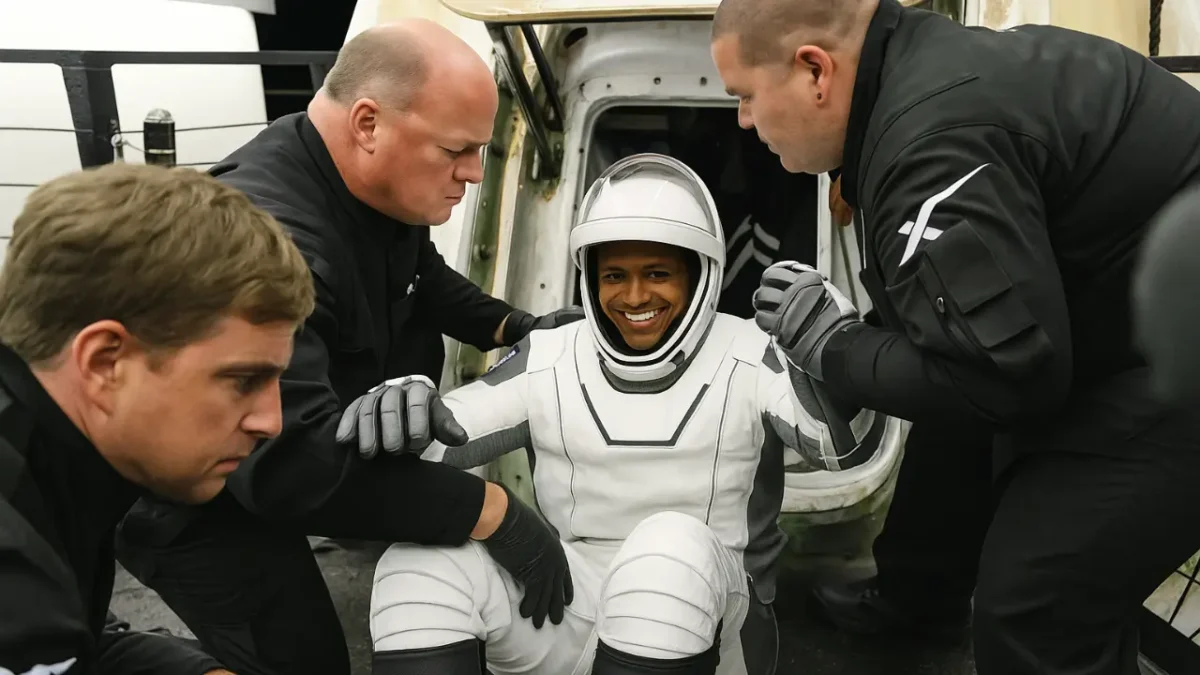Indian Air Force Group Captain Shubhanshu Shukla has returned to Earth after an 18-day stay aboard the International Space Station. His journey aboard the SpaceX Dragon capsule, under Axiom Mission 4, ended with a smooth splashdown off San Diego’s coast on Tuesday afternoon. During this mission, Shukla orbited the planet 288 times before bringing his crew safely home.
Shukla was not the only passenger on this mission. He himself piloted the spacecraft and brought the entire team back safely to Earth. He became the first Indian to travel to space in the last four decades. Along with astronauts from Poland and Hungary, he conducted scientific experiments that could have an impact on both future space discoveries and life on Earth.
After returning to Earth, SpaceX teams took him and the rest of the crew out of the capsule and immediately began their medical examination. It is not easy to re-adapt to Earth’s gravity. Living in microgravity weakens muscles, reduces bone density and changes the balance of body fluids, affecting blood circulation and organ functioning. In the coming weeks, Shukla’s heart, balance and mental health will be thoroughly examined to see how his body returns to normal.
What Experiments Did Shukla Conduct in Space?
During his 18-day stay, Shukla participated in about seven important experiments. Their purpose was to know how microgravity affects life and biology. In one experiment, he researched microbes like tardigrades, which can survive in extremely harsh conditions. Scientists want to see how they react in space so that future life-support systems can be improved.
He also investigated how human muscle development is affected in microgravity. This research can be helpful in understanding muscle loss in space as well as in treating muscle diseases on Earth. While on the ISS, Shukla also played the role of a farmer for a while, when he grew mung and fenugreek seeds to see how plants grow without gravity. This is important information for future long space missions.
In another experiment, he researched cyanobacteria, the same aquatic organisms that first created oxygen on Earth. Scientists want to know if they can be used in spacecraft recycling systems. Apart from this, he also studied microalgae, which are being seen as an alternative to food or fuel in space.
He also took part in experiments testing how astronauts interact with computer screens in zero gravity and explored brain-computer interface technology to see if direct thought-based communication with systems is possible during space missions.
Scipuz’s Take
Shubhanshu Shukla’s mission was more than a national milestone. It showed how India’s space ambitions are expanding from Gaganyaan to deeper scientific leadership in human spaceflight. From testing tardigrades to direct brain-computer links, these small but crucial steps are redefining how we think about life beyond Earth – and how space research can transform medicine, agriculture, and technology here at home.
